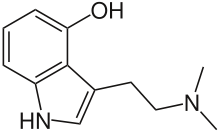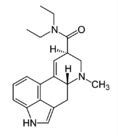Before we get started, please allow me to wish all of the mums, grandmums, greatgrandmums, greatgreatgrandmums, and, often neglected, adoptive and foster mums out there a very HAPPY MOTHER’S DAY! I just got off of the telephone with the former Mrs. Translator after wishing her the same. I would have wished my mum and grandmum that as well, but they are no longer in the temporal plane. I did give a card to my special friend since she has a little girl.
Like my current series about The Moody Blues on Popular Culture, this topic was suggested by my very dear high school buddy Steve Ahlert. (He approved of me using his name.) Steve and I sort of lost contact for a while, but now we speak almost every day. I LOVE my Straight Talk unlimited everything, $45 per month plan and my Samsung T528G!
Steve uses melatonin to help him sleep, and it is very effective for him. Now, Steve is not some new age trend follower. Actually he is a professional pharmacist, and is the best pharmacist insofar as knowing his area of expertise that I have ever known. Equally important, the way that he deals with his patients is outstanding. He has a knack for translating highly technical information to whatever level is necessary for people to understand what they need to do.
Melatonin is interesting because what has turned out to be sort of an incidental effect gave it its name. It is also interesting from a molecular structure/activity standpoint because it is chemically related to a whole host of psychologically active agents. Let us examine this interesting substance.
The effects of melatonin on affecting the color phase that certain amphibians and reptiles that are color shifters naturally. For some reason, in 1917 a couple of researchers fed some of these creatures (color shifting tadpoles in this case) extract of the pineal glands of cattle would keep them in light color phase rather than the dark one. Over 50 years later other researchers hypothesized (incorrectly) that this compound might be of value in treating human skin disorders, and isolated the pure material. They called it melatonin from the Greek melas, black, and probably another Greek word, tonos, to stretch. From this word we get the modern English word tone, one the meanings having to do with quality of color.
It turns out that melatonin does not seem to have much of any value in specific human skin conditions, but has a host of other functions in plants, lower animals, vertebrates, and especially in birds and mammals, including humans. It seems that its original, and still extremely valuable, function was as an antioxidant, particularly effective against free radicals. Interestingly, it also has some effect on the photoperiodicity in some plants, something that we will find later.
Before we get into the specifics about melatonin, let us look at its chemical similarity to other, related compounds that have effects in humans at least. You will be amazed how similar structurally it is to several other very important neurotransmitters or drugs of abuse. Here is the structural formula of melatonin:

Here is the structural formula of serotonin, and essential neurotransmitter that modulates mood, perception or reality, and a host of other functions:

The important thing to notice is the two rings that are fused together with a step line that connects to a nitrogen. The fused ring system is called an indole nucleus.
Here is the structural formula for the psychedelic drug psilocin, the active metabolite of psilocybin:

All three are biosynthesized from the amino acid tryptophan, with this structural formula:

There are also many other psychedelic drugs that contain an indole nucleus, the most famous one being LSD. It is sort of hard to find the nucleus unless you are a chemist, but here is the structural formula anyway. If you look closely at the lower left of the structure you can see the indole nucleus:

It is amazing that that nucleus is the source of so many different physiological effects, depending on what is attached to it. My major professor, Norbert Pienta, introduced the highly technical term, chicken fat, for other organic groups attached to a given nucleus. Norb is a GREAT guy.
For some reason the production of melatonin is regulated by light (not just sunlight in many cases, but any visible light). Since plants do not have pineal glands, it is a bit of a mystery how that occurs. Henceforth we shall confine the discussion to higher vertebrates (birds and mammals, including humans) to keep this piece from getting away from us.
Sometimes the pineal gland is called “the third eye”. It is buried so deeply in the brain that it certainly gets no direct illumination, but does get signals from the eye, indirectly, through a fairly complex mechanism. In other words, it “knows” how much light and dark an organism experiences.
This has profound effects on the higher vertebrates. In temperate latitudes, the regulation from melatonin (it is always produced in higher amounts in the dark) causes seasonal changes in the plumage of birds and the coloration of fur in mammals. It also has a large contribution in the sexual behavior of animals, as it can either cause sexual behavior or suppress it, depending on the gestation period of the species and the environmental situation that exists. Not all species display this phenomenon, but lots do. Here is an example.
In the eastern US, the white tailed deer (Odocoileus virginianus, with many varieties) is a species strongly influenced in both behavior and appearance by seasonally induced melatonin variations. With the increase in sunlight in the spring, melatonin production is reduced, and in males this triggers the growth of antlers. As the days grow shorter in fall, increasing levels of melatonin in females induce them to enter estrus and mating occurs. This assures that the offspring are born as spring is in full swing (the gestation period for this species is 201 days) so there is plenty of lush vegetation for the mothers to use to produce milk for the fawns.
It is rather interesting how the pineal gland “sees” light. It turns out that in the mammalian retina, in addition to rods and cones, there is a third type of photosensitive cell, called photosensitive ganglion cells that are not involved with imaging. In humans about 2% of photosensitive cells are of this type. These cells detect light using a optical pigment (melanopsin) that is very primitive, much more like invertebrate photosensitive pigments. The implication of this is that this pathway is most likely very old evolutionarily. These receptors directly send signals to the pineal gland, suppressing the release of melatonin when exposed to light.
Another extremely interesting fact is that melanopsin detects only very short wavelength light, towards the blue end of the spectrum. As a matter of fact, if light with wavelengths of 530 nm and shorter are blocked, melatonin production is not inhibited at all. I strongly suspect that artificial light has something to do with girls becoming sexually mature at a younger age now than when kerosene lamps were the sole source of light after sundown.
As stated before, one of the most important properties of melatonin is its antioxidant abilities. Thus, rapidly proliferating tissues such as bone marrow, epithelial cells, and the like. In general the melatonin in those tissues do not make it to the brain and so are not involved with the sleep cycle. Because of the antioxidant properties, it shows some promise in treating Parkinson’s disease.
A very exciting potential use for melatonin is the treatment of Alzheimer’s disease. Some studies indicate that it is useful not only for symptom improvement like currently approved drug, but may actually delay the progression of it. If this is shown to be the case, it is possible that even more potent variations of melatonin might be developed.
There are many other uses for melatonin, amongst them prevention of migraine and cluster headaches, improvement of irritable bowel syndrome symptoms, restless leg syndrome, as a weight loss aid, and, interestingly, protection form the effects of ionizing radiation. The latter is almost certainly due to its ability to neutralize free radicals.
By far the most common use of melatonin is the over the counter utilization of it as a sleep aid. That is what got Steve and me talking about it in the first place. He has trouble sleeping upon occasion, and melatonin really helps him. After doing some research, I have found that it is very helpful for some people but not for others. In addition, the cause of the sleep problem seems to matter as well. For example, it does not seem to help folks with jet lag or people whose sleep patterns are disrupted by shift work. However, there is a fascinating connexion betwixt melatonin and shift work not related to sleep at all.
It turns out that cancer rates are significantly higher in those working shifts other than day shift, for reasons that are not completely known. However, it IS known that melatonin levels are significantly lower in shift workers than in day workers. It could well be that melatonin treatment could reduce the incidence of some of these cancers.
So far, melatonin sounds too good to be true. First of all, it is NOT a panacea for everything. However, the adverse reactions are not usually serious or common. One side effect with medium to high doses (3 mg/day and up) are grogginess and/or irritability the next day and very vivid dreams that some might find disturbing. It can also affect hormonal balance in females and was actually studied as a contraceptive at one time, but other more reliable agents proved to be more effective. However, in couples trying to conceive that may be a concern. Extremely high doses may have a toxic effect on photoreceptors based on animal studies, which is sort of ironic.
Remember, this piece is not medical advice in any way, shape, or form. It is rather reporting information that I have found doing research on topics that are of interest to me. I strongly everyone to consult with a licensed medical professional before trying anything that you read here, or anywhere else for that matter. However, that does not preclude me from telling you what my plans are.
I have to go to the store anyway tomorrow and whilst there shall purchase a small supply of 3 mg tablets. Whilst I do not have sleep problems, I do have symptoms of irritable bowel syndrome from time to time, and relief from those would be welcome. I hardly ever remember my dreams, so having more vivid ones sounds sort of intriguing. Since I smoke, the anticancer effects of melatonin are interesting, too. In addition, it has been shown in animal studies that melatonin increases their lifespan by a significant amount, whilst also making some gene expression more characteristic of younger mice. Any potential rejuvenating effect would be welcome!
I shall report back on roughly a monthly basis on any changes that I notice, and sooner if I see any major change. Whilst we are on the subject of my personal medical state, my wrist is rapidly improving now. I am typing with four of five ringers on my right hand now, the little finger still being a little weak. If I continue to improve as I have in the past couple of weeks, I probably will not be wearing the splint this time next week.
Well, you have done it again! You have wasted many more einsteins of perfectly good photons reading this sleepy piece. And even though Mike Huckabee realizes that he really was whining during his monologue tonight on the Fox “News” Channel about the “liberal press” being mean to him when he reads me say it, I always learn much more that I could possibly hope to teach writing this series. Thus, please keep those comments, questions, corrections, and other feedback coming. Tips and recs are also highly appreciated. This week I am soliciting experiences of people who take melatonin themselves in addition to the usual feedback. I shall stay here for Comment Time as long as comments warrant, and return tomorrow evening at around 9:00 Eastern for Review Time. Remember, no science or technology issue is off topic here.
Warmest regards,
Doc, aka Dr. David W. Smith
Crossposted at
Docudharma, and

1 comments
Author
a sleepy topic?
Warmest regards,
Doc